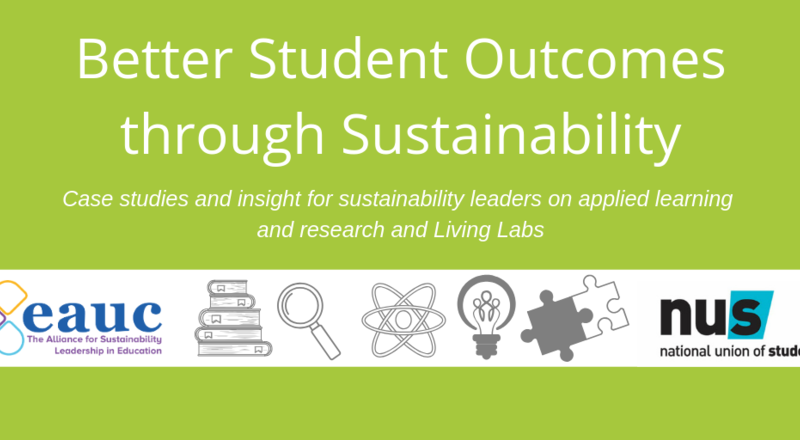The Living Lab Guide is aimed at both supporting and sharing knowledge through case study examples with tertiary education staff across all areas of an institution.
There is no such thing as one-size-fits-all approach in tertiary education. At EAUC we recognise these particularities and have partnered with National Union of Students - NUS, to develop a Guide that highlights different approaches to learning and research through partnership working – sometimes referred to as a Living Lab.
Responding to the sector's needs
Continuing the detailed guidance on the theory and value of a Living Lab that has been previously produced by EAUC, this Guide aims to provide an entry point for understanding Living Labs and share examples through case studies of how this theory is being applied in a very practical way.
As part of this Guide we developed a Living Lab Survey to better understand levels of engagement with and aspirations for development of applied teaching, learning and research in tertiary education. This informed the basis of this Guide demonstrating EAUC’s role as leading in facilitating and contributing towards knowledge exchange and shared learning across the sector.
Living Lab Survey feedback found that:
- 41% of respondents were aware of Living Labs being coordinated by a specific part of their institution.
- In most cases coordination was led by sustainability staff (31%), although some were teaching (17%) or estates (17%) led.
- 48% of survey respondents stated that there is no part of their institution that has overall responsibility for co-ordination or development of Living Labs.
The Living Lab Guide is aimed at both supporting and sharing knowledge through case study examples with tertiary education staff across all areas of an institution. It provides guidance for those looking to understand, initiate or embed impactful applied real-world learning and research opportunities through transformative pedagogies and partnership working.
Case Studies
The purpose of the series of case studies and examples provided here is to share learnings from across the breadth of the sector and each of these provides an overview of implementation methods, institutional prioritisation and key learnings.
Click here to read the full Guide.
ENDS











